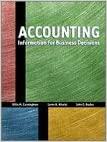Kellogg Company disclosed the following in its 1997 annual report: Inventories: Inventories are valued at the lower
Question:
Kellogg Company disclosed the following in its 1997 annual report:
Inventories: Inventories are valued at the lower of cost (principally average) or market.
Inventories: Inventories are valued at the lower of cost or market, using vari- Ous cost methods, and include the cost of raw materials, labor and overhead. The percentages of year end inventories valued using each of the methods is as follows:
December 31 1997 1996 Last-in, first-out (LIFO) 65% 53%
Average quarterly cost 30% 39% First-in, first-out (FIFO) 5% 8%
If the LIFO method of valuing these inventories was not used, total invento- ries would have been $8.6 million and $15.3 million higher than reported as of December 31, 1997 and 1996, respectively.
1997 1996 Cost of goods sold $2,564.9 $2,807.5 Inventories 256.1 274.9 Required: (1) Why do you think that Kellogg and Quaker Oats use different cost flow assumptions? Why do you think that Quaker Oats uses all three cost flow assumptions?
(2) Explain why a user might want to convert Quaker Oats’ inventory and’, cost of goods sold to non-LIFO amounts. ‘
(3) Compute the amounts of Quaker Oats’ beginning and ending inventories for 1997 and its 1997 cost of goods sold under a non-LIFO method.
(4) Compute Quaker Oats’ inventory turnover ratio for 1997 using
(a) the LIFO amounts and
(b) the non-LIFO amounts.
(5) What is the cumulative effect on Quaker Oats’ cost of goods sold of using LIFO?
Step by Step Answer:

Accounting Information For Business Decisions
ISBN: 9780030224294
1st Edition
Authors: Billie Cunningham, Loren A. Nikolai, John Bazley





